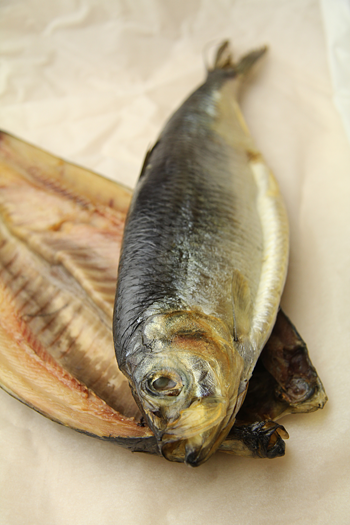My second article published in the local magazine, Letchworth Living. (March 2011 edition) www.letchworthliving.co.uk
Cheeky Spouse finds the best of British fish on our doorstep
I absolutely love fish and can’t understand why us British don’t eat more of it. There we are, a group of islands, surrounded by the bountiful sea and we shun what those waters offer up.
For those who do eat fish regularly, there is more than just cod or haddock and as these species are in decline we really do need to think about what we buy.
Recently I went to visit North Hertfordshire's only independent fishmongers,
Fish at the Fox, in Willian, which opened last November and occupies the site of what used to be The Food Barn.
It is a grey and rainy day, not at all conducive to high spirits. We park the car in one of the many spaces and dash the short distance to the unassuming white door of the shop. It’s a relief to be in the dry, and the bright and airy interior soon dissolves away the effects of the British elements.
Standing behind the shiny glass counter is Marc Howard who is a great authority on fresh fish. As we're about to shake hands, Marc pauses briefly to wash his hands, having just prepared some sea bass fillets. All clean, we can now carry on with our introductions.
It is clear to me that Marc is passionate about what he sells and knows his stuff. Everything sold at
Fish at the Fox is sourced from British waters where possible and Marc assures me that sustainability and seasonality are very important to him. It would be highly unlikely that you'd see an Icelandic cod residing in the counter. Endangered species are avoided completely.


The shop is open from Wednesday through to Saturday and Marc gets new stock in on Wednesday morning and every day if necessary to ensure it’s as fresh as possible. Nothing has had to come too far, either from our East Anglian or south coasts, and Marc can tell you exactly where any of his fish has been landed and by whom. I doubt you'd get that sort of detail from your supermarket. On the wall, behind the counter, pictures of the fisherman that supply the shop, are proudly displayed; a weather beaten Ben, Paul, Cyril and then there’s Richard, who keeps Marc in plenty of oysters and mussels from Brancaster in Norfolk. Seeing the men's coast worn faces really makes you appreciate how your fish gets to your plate.

Casting my eyes over the tempting fish resting on the crushed ice, I start imagining the delicious ways I could eat them. To some, the display could be a shock if you're particularly squeamish. Everything is presented whole, head on and eyes staring. Personally I prefer to see fish this way, you can see how fresh it is – bright gills, shining eyes and moist glistening skin, a confidence that cannot be gleaned from a pre-packaged fillet.
As I examine the brill, gurnard and megrim it occurs to me that I've never even tasted these varieties, not because I’ve not wanted to, but more that I've never been able to obtain them.
Fish can be ugly looking creatures, but I fell in love with the gurnards. Call me a softy, but they have an adorable puppy-like quality to their faces, weird but kind of cute.
Also today, there's a fearsome-looking but chunky hake, a huge sea bass, a prepared meaty monkfish tail, some sizeable skate wings and a group of sardines shimmering like precious silver darts. A bulging net of Palourde clams from Poole nestles at the back. The stock varies from week to week, but a quick phone call or checking on
Fish at the Fox's
Facebook or
Twitter pages will keep you up-to-date with what's in stock.
There’s smoked fish too, from Suffolk smokeries. The kippers look very appetising, the whole fish split open has a rich tan colour. It’s properly smoked in the traditional way, a far cry from those often luminous yellow things which have been flavoured with something more laboratorial and shrink-wrapped in plastic with a pat of butter.
A richly hued side of salmon, whole mackerel and trout sit along side. My mouth is already watering and I'm adding them to my mental shopping list.
These fish have been suffused with the flavour of real smoke, the result of having been sat in a black tar-walled shed, filled with the swirling plumes from smouldering
oak chippings.
My lengthy, yet enjoyable chat with Marc reveals what a friendly and helpful chap he is. Keen to show me the latest catch he lovingly lifts the fish from the counter and describes its texture, flavour and even suggests the best cooking methods. We both agree that fish should be done simply and avoid overcooking. To assist customers, there are a number of recipe leaflets on the counter to pick up and take home. All this reflects the care and attention to the produce and the customers.
While I'm there some customers do arrive, and one particular man is so over the moon to pick up his order of crab and oysters, it makes me feel warm and fuzzy inside.
Perhaps I'm a little strange to be so sentimental, but it is touching to be in the company of people who appreciate good produce.
For those not able to make it to the shop,
Fish at the Fox now offer a local delivery service. If you live in the Letchworth or Hitchin area and your order is over £15, Marc will deliver for free, bringing fresh fish direct to your door. Now that's a personal touch.
www.fishatthefox.co.uk
Photos: ©childsdesign 2011

Featured on The Artisan Food Trail
 I've been lucky enough to have received a fair few review copies from various publishers, over the last few months and one particular book has sat patiently waiting for my attention. I've had a copy of Potty by Clarissa Dickson Wright hanging around since just before Christmas, but with one thing and another, particulary the day job taking up much of my time it somehow got shelved. That said, it is not because it isn't worthy of my consideration, quite the opposite. So, even at this rather late stage, I feel it deserves my positive evaluation.
I've been lucky enough to have received a fair few review copies from various publishers, over the last few months and one particular book has sat patiently waiting for my attention. I've had a copy of Potty by Clarissa Dickson Wright hanging around since just before Christmas, but with one thing and another, particulary the day job taking up much of my time it somehow got shelved. That said, it is not because it isn't worthy of my consideration, quite the opposite. So, even at this rather late stage, I feel it deserves my positive evaluation.






















